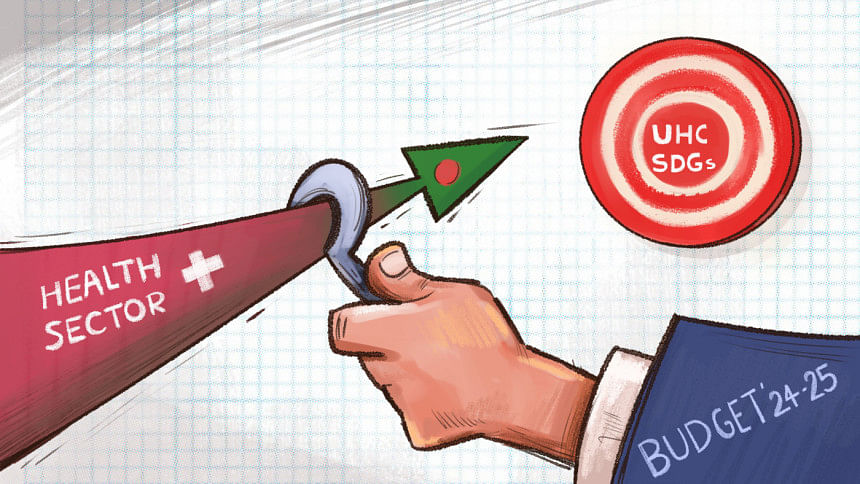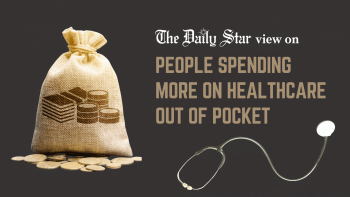What can we learn about universal health coverage from global experiences?

Allocation of resources to the health sector and proper utilisation of that allocation are crucial for achieving universal health coverage (UHC) as well as the Sustainable Development Goals (SDGs). Many countries are moving towards health sector reforms by customising their healthcare financing mechanisms and healthcare provider payment methods. Global experiences show that more resources for the health sector aligned with increasing efficiency in spending, appropriate healthcare provider reimbursement, purchaser-provider split, and supply-side cost sharing are leading the countries towards achieving UHC. In 2021, Thailand spent 13.5 percent of its total government spending on health, while Turkey spent 11.5 percent, Sri Lanka 9.5 percent, and Vietnam nine percent. The same year, the out-of-pocket (OOP) health expenditure was nine percent of the total health expenditure in Thailand, 16.2 percent in Turkey, 49.6 percent in Sri Lanka, and 40.0 percent in Vietnam. These countries reduced OOP expenditure and increased efficiency in health service delivery by adopting different provider payment mechanisms and pro-poor strategies. Many countries are implementing a blended approach of input-based and outcome-based financing to tackle inefficiency, information asymmetry and moral hazards in health service delivery.
Bangladesh has allocated 5.19 percent of the proposed national budget—Tk 41,407 crore—to the health sector in FY2024-25. The share of the health sector has been more or less five percent of the budget for more than a decade. In 2020, Bangladesh's current health expenditure per capita was $50.66, and the government health expenditure per capita was $9.1, according to the World Bank. The share of health in the budget and the per capita health expenditure in the country are low compared to other Asian countries. It has produced relatively good outcomes in achieving some of the MDGs at a low cost, but the issue of financial protection in healthcare and achieving the SDG targets remains a crucial challenge.
The low share of public financing is echoed in the relatively lower use of public health facilities in Bangladesh. Only around 12 percent of total health services were sought from public health facilities and about 29 percent from formal private healthcare providers in 2022. Informal healthcare providers dominated by providing 59 percent of the total health services. The large share of informal healthcare providers is also reflected in access to and utilisation of medical goods in the country. Patients receive 93 percent of their medicines from private pharmacies. Expenditure on medical goods from private providers was more than 60 percent of the total OOP expenditure in 2020. The OOP health expenditure was 68.5 percent of total health expenditure in 2020.
Budget preparation in Bangladesh is not backed by economic evaluation as it is in many other countries. And budget spending does not always ensure implementation of cost-effective interventions either; in 2022, the health budget utilisation rate was only about 78 percent. Lengthy procurement process, limited capacity of health managers in budget execution, rigid public financial management rules, frequent transfer of health managers, inadequate monitoring and supervision and lack of financial autonomy of public health facilities might be the causes of the low absorption capacity.
Bangladesh prepared the first Health Care Financing Strategy (2012-32) in 2012. The strategy described a pathway to achieve UHC in the country by identifying key interventions such as increasing budgetary allocation along with improving efficiency in financial management and health service delivery, establishing a health protection scheme, piloting and scaling up of Shasthya Surakhsha Karmasuchi (SSK), and initiating mandatory health insurance for the population employed in the formal sector. The recent review of the strategy also emphasised increasing public financing, revisiting public financial management rules, purchaser-provider split, strategic purchasing, and accreditation of the private sector.
Sri Lanka has successfully lowered catastrophic health spending (5.33 percent) in a health system funded by general taxes and input-based financing. Thailand, Philippines, Indonesia, Turkey, and India, on the other hand, increased coverage by transitioning from input-based to outcome-based payment approaches. There is no one-size-fits-all solution. Bangladesh needs to emphasise the area of provider payment immediately. Designing proper healthcare financing mechanisms and provider payment methods will help to redirect this huge OOP expenditure in the private sector through a third party, increase financing coverage, and ensure the quality of health services. The government may allocate additional funds for medical goods and increase the availability of medicines in public health facilities with effective monitoring and supervision. This could be a crucial intervention for reducing OOP expenditure in Bangladesh. India and Nepal recently increased the availability of medicines in public healthcare facilities with an increase in financial coverage.
As mentioned earlier, Bangladesh has produced "good outcomes at a low cost." There are other contributing factors outside the health sector, such as increased literacy rates, poverty reduction, social safety nets and other social determinants of health. These factors helped in reducing child mortality and achieving some of the MDG targets. Investment in public health and other social and environmental determinants of health is sometimes very cost-effective. Planned investment in health is required not only in the health sector, but also in other sectors. Different ministries should work together with better coordination to attain the SDGs by 2030 and the goals of the Perspective Plan by 2041.
Increasing efficiency in the public sector is a prerequisite for increasing budget allocation and enhancing healthcare financing coverage. However, global experiences show that an increase in efficiency alone is not sufficient to achieve UHC. Rather, countries improved efficiency while simultaneously increasing allocation in the public sector. The health sector's share in the national budget must be increased substantially in Bangladesh along with drastic measures to improve efficiency. It is essential to gradually introduce outcome-based payment in the health sector and strategic purchasing in the private sector. A master plan for health should be prepared with a holistic approach, including future allocation for the health sector, spending modalities, the needed health sector reforms, and of course, integrating health into other policies. We expect to see its reflection in the national budget in the coming years.
Nahid Akhter Jahan is professor at the Institute of Health Economics in the University of Dhaka.
Views expressed in this article are the author's own.
Follow The Daily Star Opinion on Facebook for the latest opinions, commentaries and analyses by experts and professionals. To contribute your article or letter to The Daily Star Opinion, see our guidelines for submission.

 For all latest news, follow The Daily Star's Google News channel.
For all latest news, follow The Daily Star's Google News channel. 









Comments